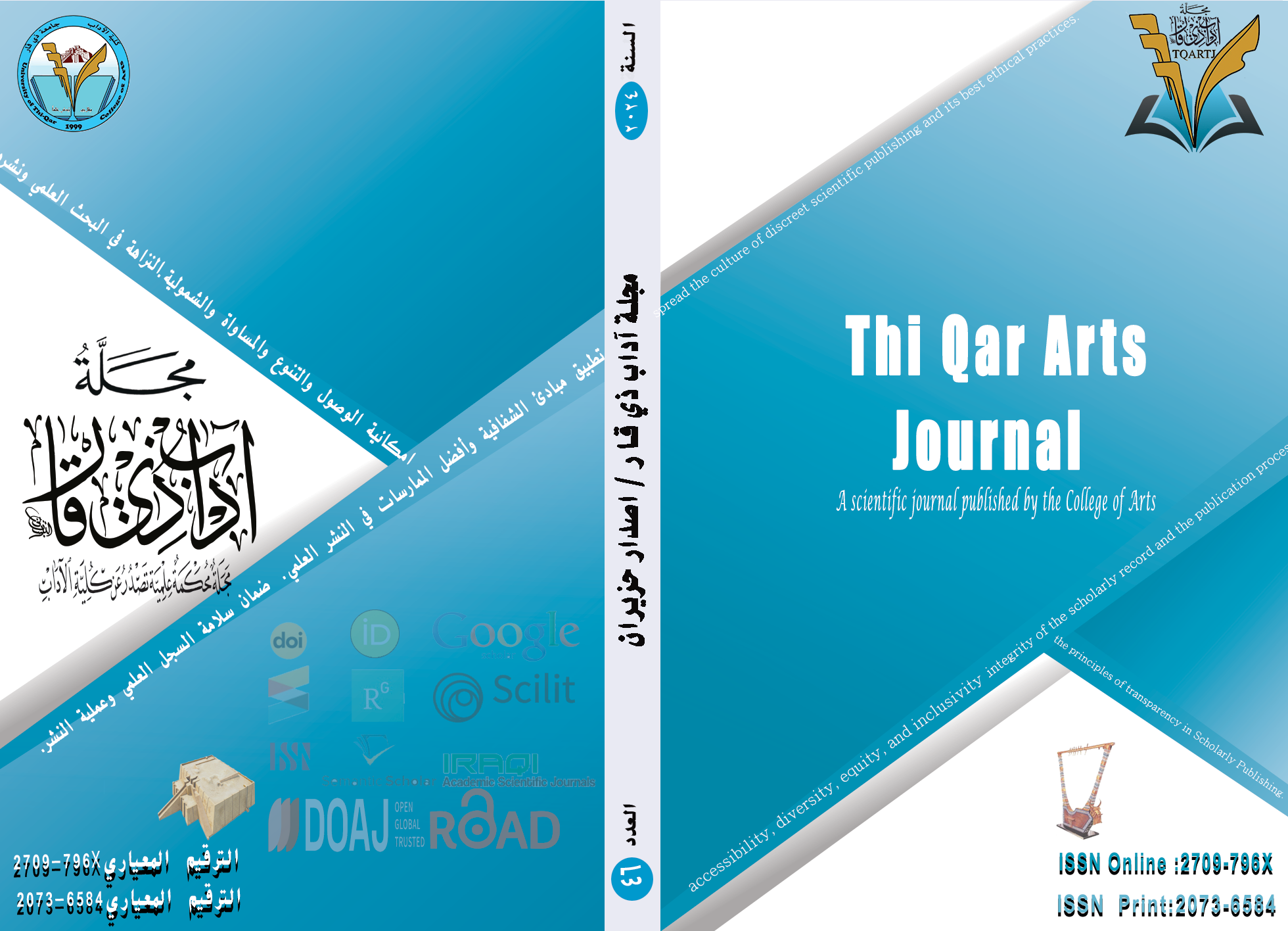Validation of the Gap-fill as an Overall Measure of English Language Proficiency among Iraqi EFL Learners
DOI:
https://doi.org/10.32792/tqartj.v5i46.605Keywords:
Gap-fill, reduced redundancy principle, validity, conversational Gap-fill, written Gap-fillAbstract
The purpose of this study was to validate the Gap-fill among Iraqi EFL university students. To this end, two types of multiple-choice Gap-fill were administered to a sample of EFL students along with a number of other tests as criteria. Correlational analyses revealed moderate to strong correlations between the Gap-fill and the criterion measures. Principal components analysis resulted in a one-factor solution with the Gap-fill highly loading on this single factor. These were interpreted as validity evidence for the. Gap-fill Implication of the study for classroom testing are discussed.
Keywords: Gap-fill, reduced redundancy principle, validity, conversational Gap-fill, written Gap-fill
Downloads
References
Alderson, J. C. (2005). Diagnosing foreign language proficiency: The interface between learning and assessment. London: Continuum.
Aryadoust, V., & Baghaei, P. (2016). Does EFL readers’ lexical and grammatical knowledge predict their reading ability? Insights from a Perceptron Artificial Neural Network study. Educational Assessment, 21, 135-156.
Baghaei, P. (2013). Development and psychometric evaluation of a multidimensional scale of willingness to communicate in a foreign language. European Journal of Psychology of Education, 28, 1087-1103.
Baghaei, P. & Doebler, P. (2019). Introduction to the Rasch Poisson Counts Model: An R tutorial. Psychological Reports, 122 (5), 1967-1994.
Baghaei, P., Hohensinn, C., & Kubinger, K.D. (2014). The Persian adaptation of the foreign language reading anxiety scale: A psychometric analysis. Psychological Reports, 114, 315-325.
Baghaei, P. & Kubinger, K. D. (2015). Linear logistic test modeling with R. Practical Assessment, Research & Evaluation, 20, 1-11.
Baghaei, P., Monshi Toussi, M.T., & Boori, A. A. (2009). An Investigation into the validity of conversational C-Test as a measure of oral abilities. Iranian EFL Journal, 4, 94-109.
Baghaei, P., & Ravand, H. (2019). Method bias in cloze tests as reading comprehension measures. SAGE Open. doi: 10.1177/2158244019832706
Baghaei, P., & Tabatabaee, M. (2015). The C-Test: An integrative measure of crystallized intelligence. Journal of Intelligence, 3, 46-58. Available: http://www.mdpi.com/2079-3200/3/2/46
Baghaei, P., Yanagida, T., & Heene, M. (2017). Development of a descriptive fit statistic for the Rasch model. North American Journal of Psychology, 19, 155-168.
Coniam, D. (2009). Investigating the quality of teacher-produced tests for EFL students and the effect of training in test development principles on improving test quality. System, 37, 226–242.
Eid, M., Gollwitzer, M., & Schmitt, M. (2011). Statistik und Forschungsmethoden Lehrbuch [Statistics and research methods textbook]. Weinheim: Beltz.
Sheybani, E., & Zeraatpishe, M. (2018). On the dimensionality of reading comprehension tests composed of text comprehension items and cloze test items. International Journal of Language Testing, 8, 12-26.
Spolsky, B. (1968). What does it mean to know a language? Or how do you get someone to perform his competence? Paper presented at the Second Conference on Problems in Foreign Language Testing, University of Southern California.
Widyaningsih, S. W., Yusuf, I., Prasetyo, Z. K., & Istiyono, E. (2021). The development of the HOTS test of physics based on modern test theory: Question Modeling through e-learning of moodle LMS. International Journal of Instruction, 14(4), 51-68.
Yazdinejad, A., & Zeraatpishe, M. (2019). Investigating the validity of partial dictation as a test of overall language proficiency. International Journal of Language Testing, 9, 44-56.
Zare, S., & Boori, A. A. (2018). Psychometric evaluation of the speeded cloze-elide test as a general test of proficiency in English as a foreign language. International Journal of Language Testing, 8, 33-43.
Downloads
Published
License
Copyright (c) 2024 Ahmed Sattar

This work is licensed under a Creative Commons Attribution 4.0 International License.
The journal applies the license of CC BY (a Creative Commons Attribution International license). This license allows authors to keep ownership of the copyright of their papers. But this license permits any user to download, print out, extract, reuse, archive, and distribute the article, so long as appropriate credit is given to the authors and the source of the work. The license ensures that the article will be available as widely as possible and that the article can be included in any scientific archive.



















